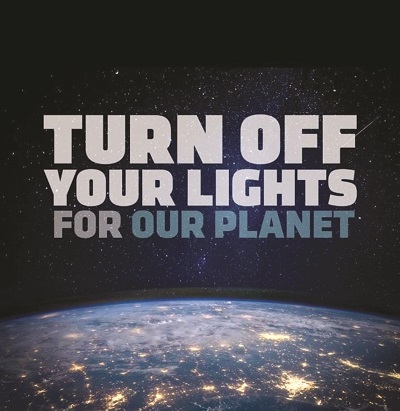By: Kamohelo Ntsebeng
Maseru
In 2004, confronted with scientific findings, WWF Australia met with advertising agency Leo Burnett Sydney to “discuss ideas for engaging Australians on the issue of climate change”. The idea of a large scale switch off was coined and developed in 2006, originally under the working title “The Big Flick”. WWF Australia presented their concept to Fairfax Media who, along with Sydney Lord Mayor Clover Moore, agreed to back the event, which would then be in 2007.
The 2007 Earth Hour was held on March 31 in Sydney, Australia at 7:30 pm, local time.
In October 2007, San Francisco ran its own “Lights Out” program inspired by the Sydney Earth Hour. After their successful event in October, the organizers decided to rally behind the Earth Hour being planned for local time, marking the first anniversary of the event. 35 countries around the world participated as official flagship cities
According to WWF Thailand, due to acknowledged earth hour days – where for an hour of the chosen day of this commemoration, engaged countries partake in any one chosen activity for a disciplined completion of the said activity. Bangkok, having decided not to use electricity for an hour, it decreased electricity usage by 73.34 megawatts, which, over one hour, is equivalent to 41.6 tonnes of carbon dioxide.
The Bangkok Post gave different figures of 165 megawatt-hours and 102 tonnes of carbon dioxide. This was noted to be significantly less than a similar campaign initiated by Bangkok’s City Hall the previous year in May, when 530 megawatt-hours were saved and 143 tonnes of carbon dioxide emission were cut.
One of the least co-operative areas traditionally has been Alberta; in 2008, Calgary’s power consumption went up during Earth Hour. The trend continued in 2011 when Edmonton’s power usage also increased. While Calgary’s power usage went down in 2011 during the event, electricity officials could not distinguish their readings between normal usage and a conscious attempt to participate.
Earth Hour 2011 was the biggest year in the campaign’s five-year history, reaffirming it as the largest ever voluntary action for the environment. In 2011, the tagline “Beyond the Hour” was adopted by organizers as a way to encourage people to take their commitment to the cause beyond the 60-minute event. Together with agency Leo Burnett, Earth Hour unveiled an updated planet themed logo that included a small plus symbol to the right of the signature “60” which was used in previous years. The 60+ symbol continues to be the main logo used by campaign organizers around the world.
Earth Hour 2011 took place in a record 5,251 cities and towns in 135 countries and territories on all seven continents. It had an estimated reach of 1.8 billion people across the globe. In addition to this, the campaign’s digital footprint grew to 91 million. In 2013, the world’s first Earth Hour Forest began in Uganda, an ongoing project that aims to restore 2700 hectares of degraded land. Standard Chartered Bank-Uganda pledged to help fill the forest with more than 250,000 trees.
Earth Hour commemorations in Madagascar had as their highlight the distribution of one thousand wood-saving stoves to victims of the cyclone Haruna in the southern town of Toliara, extensively damaged in the February 22 storm. WWF-Madagascar and ADES (Association pour le Développement de l’Energie Solaire) distributed an additional 2,200 wood-saving stoves later that year.
The best result was from Christchurch, New Zealand, with the city reporting a drop of 13% in electricity demand. However, national grid operator Transpower reported that New Zealand’s power consumption during Earth Hour was 335 megawatts, higher than the 328 megawatt average of the previous two Saturdays. Melbourne, Australia reduced demand by 10.1%. Sydney, being the city that participated in both the 2007 and 2008 Earth Hours, cut electricity consumption by 8.4%. This is less than the previous year’s 10.2%; however, Earth Hour executive director Andy Ridley made the claim that after factoring margin of error, the participation in this city was the same.
The worst result was from Calgary, Canada. The city’s power consumption actually went up 3.6% at the hour’s peak electricity demand. Calgary’s weather plays a large role in power consumption, and the city experienced weather 12 °C colder than the previously recorded temperature in the inaugural year. Enmax, the city’s power supplier, has confirmed that in all subsequent years, Calgarians have not supported the Earth Hour initiative, noting that power consumption changed only marginally during the hour in 2010 and 2011 (1% or less) and in 2012 and 2013 showed no appreciable change in power usage at all.
The earth hour 2024 will take place on Saturday March 23rd from 8:30pm to 9:30pm local time in order to avoid coinciding with the Western Christian Holy Saturday which will fall on March 30. Tel Aviv scheduled their Earth Hour for Thursday March 27, 2008 to avoid conflict with Sabbath. Dublin moved their Earth Hour to between 9 and 10 p.m. due to their northern geographical location.


